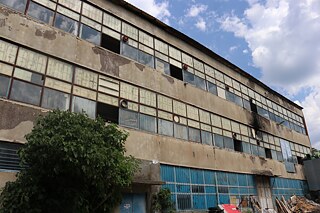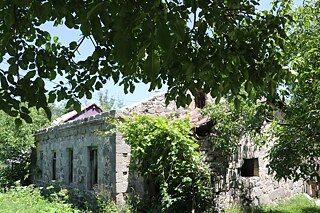Khulo
The physical mapping process for the municipality included both theoretical and practical aspects for two months. Experts, along with the educational component of the developed mapping methodology, mentored the municipality’s working group through each step of the process.
A detailed list of buildings and spaces was created. To collect information about these objects, research was conducted through inter-sectoral cooperation, fieldwork, and photofilming. The gathered data was then analyzed and recorded on a digital map, and the results were presented.
A detailed list of buildings and spaces was created. To collect information about these objects, research was conducted through inter-sectoral cooperation, fieldwork, and photofilming. The gathered data was then analyzed and recorded on a digital map, and the results were presented.
Physical Mapping Results
In the municipality of Khulo, 34% of the listed 38 objects are spaces of culture and creativity, 29% are occupied by Retail infrastructure, 10% are administrative buildings, and 8% are educational and research, as well as various medical institutions. Industrial and manufacturing infrastructure, hospitality facilities, and transport infrastructure are presented by 3 - 3%, and sports infrastructure includes 2%.
The usage of listed properties follows 66% of objects are operational, 10% are partially used, and 24% are non-functional.
The structural condition of the mapped buildings is - 58% are structurally stable, 26% are lightly damaged, 13% are heavily damaged, and 3% are rehabilitated.
The ownership of these properties is distributed as follows: 20% private ownership, 24% state ownership, 45% municipal ownership, and 2% co-ownership.
Notable buildings include the Beghleti Mosque, Agara Culture House, Agara Mosque, Tsikkhuri Culture House, Tsikhuri Mosque, Ghorjomi Culture House, Ghorjomi Mosque, Khulo Culture House, Khulo Factory, Khulo Old Hospital.
The usage of listed properties follows 66% of objects are operational, 10% are partially used, and 24% are non-functional.
The structural condition of the mapped buildings is - 58% are structurally stable, 26% are lightly damaged, 13% are heavily damaged, and 3% are rehabilitated.
The ownership of these properties is distributed as follows: 20% private ownership, 24% state ownership, 45% municipal ownership, and 2% co-ownership.
Notable buildings include the Beghleti Mosque, Agara Culture House, Agara Mosque, Tsikkhuri Culture House, Tsikhuri Mosque, Ghorjomi Culture House, Ghorjomi Mosque, Khulo Culture House, Khulo Factory, Khulo Old Hospital.






